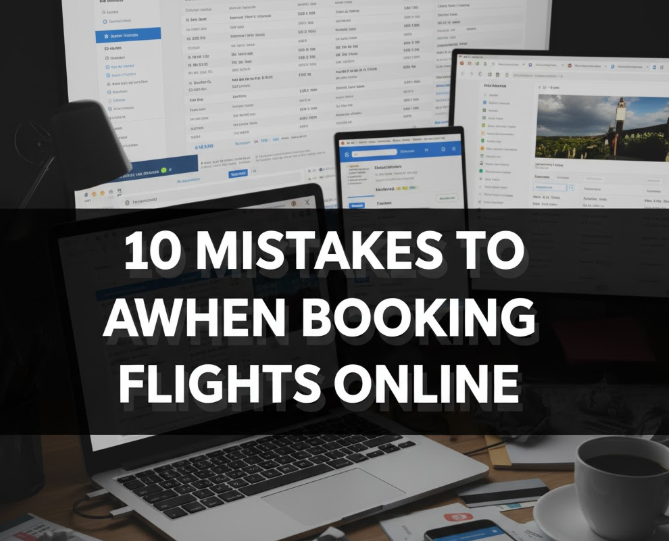It’s the age-old question: Why did my friend get the same $200 discount on a trip and I didn’t? What’s the secret? It’s not sorcery: It has to do with timing. Prices are always up and down, based on demand, season and of all things when in the day you’re searching. Knowing when to press that “book now” button can save you hundreds of dollars on your next trip. In this guide you will discover when the best time to book a flight is, and how to ensure that you maximize your hard-earned cash so that you can still afford to reach your dream destination.
The Sweet Spot: When Should You Book a Flight for the Best Price?
The most common question I get is: “How far in advance should I book my flight?” There is a pricing sweet spot, research shows, and it varies based on whether you are traveling domestically or internationally.
Domestic Flights: The 1-3 Month Rule
When it comes to flights in your country, book between 3 weeks and 3 months before departure. Airlines generally open up their cheapest seats about three months ahead and prices rise as the departure date nears. Book too early (over 4 months in) and you won’t necessarily get the best deal because airlines have not released their discounted seats yet.
The absolute best time? Studies have shown that, on average, 54 days is the low point for domestic travel. But this could vary some based on where you’re going and when.
International Flights: Plan Further Ahead
Traveling abroad is going to take a little more preparation. The best time to book international flights is 2-8 months in advance. For international trips and popular routes, try to book 5-6 months in advance. Low-cost carriers often put out early promotional rates too, so the earlier you start tracking prices (if your dates are flexible enough), the better.
| Flight Type | When to Book | Average Savings |
|---|---|---|
| Domestic Economy | 3-8 weeks before | Up to 25% |
| International Economy | 2-6 months before | Up to 35% |
| Peak Season Travel | 4-6 months before | Up to 40% |
| Last-Minute Deals | 1-2 weeks before | Up to 20% (risky) |
What Is the Cheapest Day of the Week to Fly?
Believe it or not, the day you search and buy can make a big difference in what you pay. Prices change based on search patterns and booking behavior during the week.
Tuesday and Wednesday: Your New Best Friends
THE BEST TIME TO BOOK ON TUESDAY AFTERNOON HAS BEEN THE GOLDEN RULE. Why? Airlines generally publish their weekly fare sales on Monday evening, but by Tuesday afternoon, competing airlines have matched prices — and inaugurated their own mini-price war of sorts to the benefit of fliers. Wednesday is a close second as the best day.
Mean Airfares According to the Week Days
- Monday — $320
- Tuesday — $285
- Wednesday — $295
- Thursday — $335
- Friday — $365
- Saturday — $345
- Sunday — $380
Avoid Weekend Booking
The most expensive days to book flights are Friday through Sunday. Business travelers tend to book on Fridays with company money, which creates high demand. Leisure passengers are also more likely to book on weekends, when they’re off work and have time to search, which is considered an indication to airlines that they can bring prices up.
What Time of Day to Book Your Flights?
As crucial as which day you book, however, is what time you actually hit the search button. Airlines say they set prices several times a day based on demand patterns.
Early Morning: 5 AM to 7 AM
The early bird does indeed get the worm of flight deals. Booking in the middle of the night, between 5 AM and 7 AM will result in 5-10% cheaper than booking at peak hours. Because few other searchers are exploring routes during these hours, you’ll encounter less competition and flight systems may still be processing overnight price updates.
Afternoon Sweet Spot: 3 PM
The magic hour to book is around 3 PM on Tuesday. It’s when the airlines are done responding to fare sales on Monday and reworked their prices. You’ll get the most bang for your buck by choosing the right day and time.
Pro Tip: Set price alerts on several flight comparison websites and monitor them during these sweet spot hours. Airlines allocate only a few, limited-quantity discount seats, so you’ll have to move quickly if you spot some great fares.

Season Timing: The Best Times to Fly for Cheaper Fares
The season in which you travel will significantly influence prices. When it’s busy, airlines charge more; when it’s slow, they offer discounts.
Off-Peak Season Magic
Try to travel in the shoulder or off-peak season and save 30–50 percent versus traveling in peak times. For most destinations, off-peak includes:
- Late January through March (except during Spring break weeks)
- September to mid-November (ideal weather, fewer crowds)
- Early December (before holiday rush)
Holiday Booking Strategy
If you have to fly during holidays, secure your flights at a minimum of 3-4 months out. For Thanksgiving and Christmas, some experts say you should book as much as six months in advance. Prices double, triple, even quadruple as holidays near because airlines know people will pay a premium to be with family.
| Travel Times | When to Book | Price Trend |
|---|---|---|
| Summer (June-August) | 3-4 months in advance | Most expensive |
| Winter Break (Dec-Late Feb) | 4-6 months in advance | Very expensive |
| Spring Break | 2-3 months in advance | Expensive |
| Fall/Late Winter | 1 month ahead of time | Cheapest |
Here Are Some Clever Ways to Stretch Your Savings
Be Flexible with Your Dates
Flexibility is the No. 1 rule for finding cheap flights. If you are flexible enough to adjust a day or two on either end of your travel date, though, you’re likely to find prices $100-200 cheaper. Many flight search engines display prices on a graph showing the days for which the fare is available — take advantage of these features!
For more flight booking tips and exclusive deals, visit https://calltoflights.com.
Consider Nearby Airports
Traveling to or from smaller airports close to the cities you want to visit can save some serious dollars. Take Oakland instead of San Francisco, or Midway over O’Hare in Chicago — that choice is almost always a cheaper one. Just remember to budget for the additional transportation costs to reach your final destination.
Use Incognito Mode
Airlines and booking sites use “cookies” — little information they store on your computer or in the browser — to keep track of your searches. If you search the same route more than once, they will often show you higher prices, luring you back in with a sense of urgency. ALWAYS search in incognito or private browsing to get the real lowest price.
Mix and Match Airlines
Don’t assume that you will have to book round-trip flights with the same airline. In some cases it can be less expensive to purchase two one-way tickets on separate airlines than a round-trip itinerary. This is a strategy well-suited for international travel, particularly.
Money-Saving Hack: Subscribe to airline newsletters and follow on social media. Subscribers will frequently hear first about flash sales offered by airlines, which provide 24 to 48 hours of slashing prices on airfare to a certain destination before the news reaches the masses.
Red Flags: When NOT to Book
It is not just about the best times to book; it is also about when you should not. Here are times to hold off:
- More than 11 months out: Airline pricing schedules haven’t been released yet
- Weekend nights: Prices at their highest due to higher demand
- In the 2 weeks leading up to major holidays (unless finding a flash sale): Top dollar prices
- Mondays: Weekend price hike doesn’t go away
The Tools and Resources for Monitoring Flight Prices
Finding the cheapest flights has never been easier with modern technology. Take advantage of these resources:
- Google Flights: You can’t book flights directly, but it’s great for seeing prices on flexible days and following fare trends. Check out Google Flights for comprehensive price tracking.
- Skyscanner: The place to start if you want to find the cheapest month to visit.
- Hopper: It predicts with algorithms whether prices will go up or down.
- Scott’s Cheap Flights / Going: Email newsletters that send you alerts for mistake fares and flash sales.

What Time to Book Flights for Maximum Discounts
Frequently Asked Questions
Will deleting my cookies cause online flight prices to drop?
This is partially true. Airlines may not hike prices just because you’ve previously searched, but booking sites do use cookies to personalize what they show you. Going incognito ensures you don’t see inflated prices based on tracking, and sometimes a lower fare will pop up.
Should I wait for a sale or book when I see a good fare?
Book it if the price is within 10-15% of the historic average for that route. Waiting for the lowest, bottom-of-the-cycle price is playing with fire — you may save $30 but end up losing $200 if prices spike. Research and determine a price target and book when you get there.
Do flight prices really go up if you search a lot?
Airlines do not follow individual users in order to hike up prices. But their dynamic pricing algorithms will raise prices as seats fill, a condition well on the way to being met as more and more people are searching and booking. That gives you the illusion of prices going up alongside your searches.
Are red-eye flights actually cheaper?
Yes, typically red-eye flights (those that depart late at night and arrive the following morning) are cheaper because most people don’t want to fly overnight. If you can sleep on planes, or don’t mind spending a night awake in the sky, there’s fantastic value to be had on red-eyes.
Should I book directly with the airline or through third-party sites?
Compare prices on third-party sites, but also check airline websites. With direct bookings, it is easier to change flights and get customer service, and customers get loyalty points. But some third-party sites do have exclusive deals, so it’s always worth comparing.
Your Flight to Savings Begins Today
Scoring a fare deal can feel like winning the lottery. But searching for cheap flights isn’t about getting lucky. You’ll save hundreds of dollars on every vacation by booking during the perfect windows (3-8 weeks for domestic, 2-6 months for international), searching on Tuesday or Wednesday afternoons and always being as flexible as possible with your dates. Keep in mind that the airlines are desperate for your business, and they make deals to fill seats all the time. Your role is to be ready when those deals arrive.
Begin by setting price alerts for your favorite routes now. Keep an eye on prices for a week or two and develop a sense of the baseline cost; then pounce when prices fall below that average. Once you have these timing strategies in your travel toolkit, you’ll never overpay for flights again. Safe travels and happy savings!







Nice info